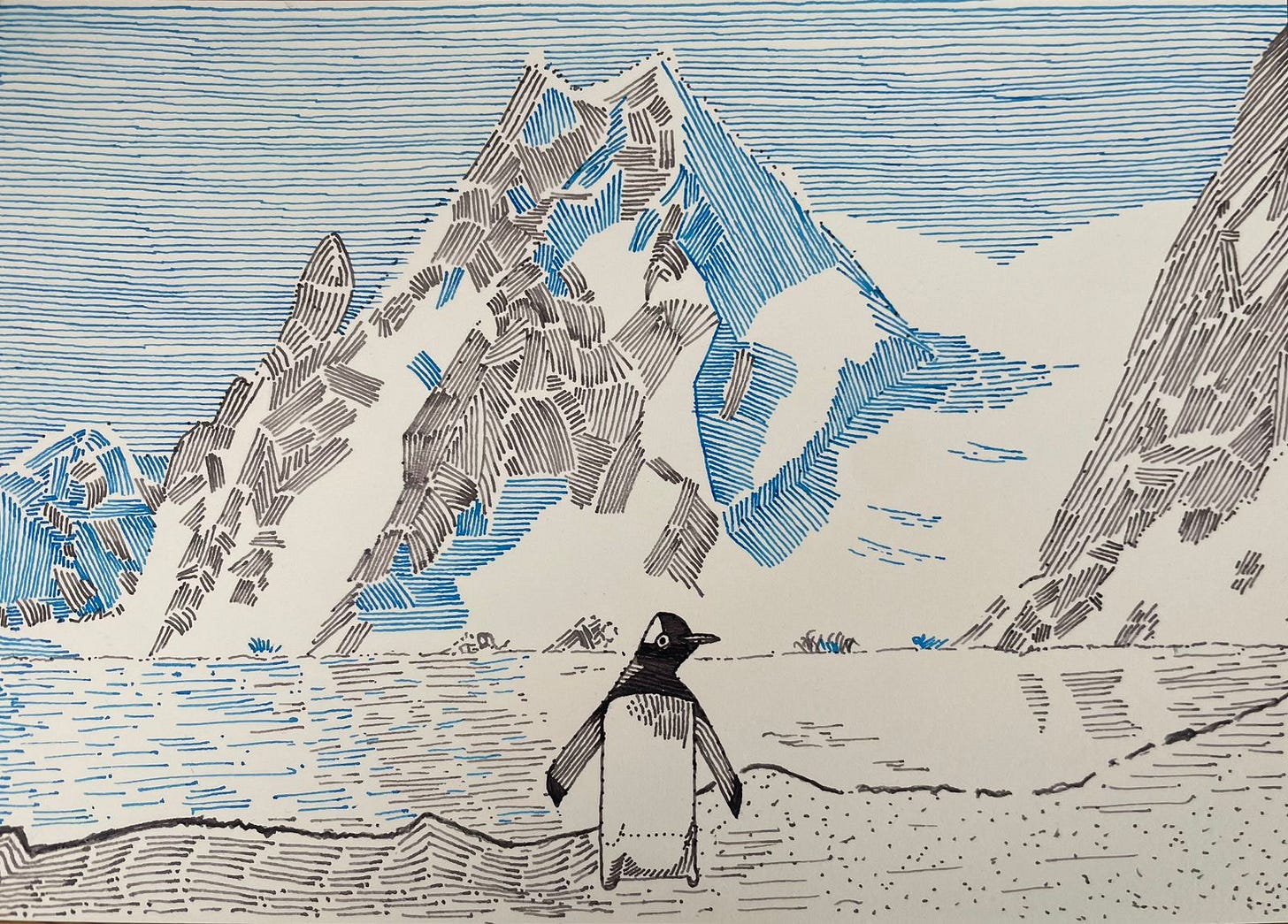
This flash essay is part of a collaborative, constrained-writing challenge undertaken by some members of the Bangalore Substack Writers Group. Each of us examined the concept of ‘TIME’ through our unique perspective, distilled into roughly 400 words. At the bottom of this snippet, you’ll find links to other essays by fellow writers.
The language of geoscience encompasses vast timescales: aeons, eras, periods, epochs, and ages. 13.8 billion years ago, a small, hot, dense singularity occurred, and millions of suns, planets and debris were hurtled into an ever-expanding, ever-cooling cosmos.
As these fragments converged into galaxies, puffs of cloud and dust coalesced into planetesimals, proto-planets, and then, planets. In one such swirling, milky galaxy, 4.6 billion years ago, a little planet was formed. It was pulled into an orbit along with other debris, around a furious ball of fire. For aeons, the planet gathered material when bombarded by dust particles, asteroids, and other celestial objects. One shattering, shuddering impact loosened a large chunk of rock, gas and dust, and began to orbit around the planet.
Then, 3.7 billion years ago, the planet's soup of gases, dust, and water, produced amino acids — the building blocks of proteins. And somewhere, somehow (theories abound on the how), photosynthetic, microscopic life evolved. As life evolved from microscopic to macroscopic, powered by photosynthesis or cellular respiration, the planet's biogeochemical cycles — essential processes that channel nutrients between organisms and their environment — changed.
As the planet's surface was shaped and sculpted by these nutrient cycles, it embedded clues within the warp and weft of its landscapes. Trapped with the strata of rock, soil, ice and sediment, are minerals, fossils, pollen, charcoal and cultural artefacts — each a timepiece into the planet's past.
Pottery shards and material goods whisper tales of human history; fossils and pollen hint at the evolution of biodiversity; and mineral deposits are clues to how landscapes formed. And over lifespans of hours, days, weeks, years and decades, we, tail-less apes, ponder deep-time signatures from when galaxies were born, stars imploded, planets formed and life, as we know it, evolved.
Here’s a list of other ‘TIME’less pieces by other Bangalore Substack Group writers:
The endless ebb and flow of Time by Siddarth RG, Siddarth’s Newsletter
Locating Myself In The Map of Time by Priyanka Sacheti, A Home For Homeless Thoughts
“So… When will shit actually hit the fan?” by Sailee, sunny climate stormy climate
Time: I Just Want to See It, Watch It Move by Abhishek Singh, The Comic Dreamer
The vicious cycle of sixteen - A dancer’s take on keeping time by Eshna Benegal, The Deep Cut
How mystery writers play with the clock by Gowri N Kishore, About Murder, She Wrote
How long is twenty years? by Richa Vadini Singh, Here’s What I Think
What keeps the fool in me delighted by Rahul Singh, Mehfil
Keeping Time by Reshma Apte, Fanciful Senorita
The Thing We Pretend To Understand by Avinash Shenoy, OfftheWalls
The lost intimacy with time by Siddharth Batra, Siddharth’s substack
TIME INFLATED, JUSTICE DEFLATED. by Lavina G, The Nexus Terrain
“Tata Mummy Tata” by Rakhi Anil, Rakhi’s Substack
Lessons Time Taught Me by Aryan Kavan Gowda, Wonderings of a Wanderer
A Time for Worship by Vaibhav Gupta, Thorough and Unkempt
Time, please! by Shaili Desai - Litcurry




What a sonorous rendition of cosmic history!
Really enjoyed this piece Devayani! As much as it sometimes feels like we’re determined to put the planet on a fast track to destruction, reading this put things into perspective for me. What will be, will be, but we’re mere temporary passengers on this planet’s journey! Kinda reassuring, that.